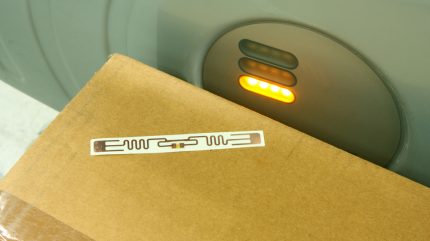
NFC-enabled packaging is a type of product packaging that has a tiny chip inside it. This chip can communicate wirelessly with a smartphone or other device when they are very close to each other.
By simply tapping your phone on the packaging, you can instantly get useful information about the product, such as how it was made, whether it’s genuine, or special offers from the brand. It makes packaging smart and interactive without any extra effort.

Discover B2B Marketing That Performs
Combine business intelligence and editorial excellence to reach engaged professionals across 36 leading media platforms.
Near Field Communication (NFC) technology has quickly moved beyond just mobile payments and is now making packaging more engaging and secure.
By embedding NFC chips into packaging, brands create new ways to connect with customers, offering instant access to details and experiences that used to be impossible through traditional packaging alone.
This innovation is shaping the future of shopping and product interaction.
What is NFC-enabled packaging and how does it work?
NFC-enabled packaging works by placing tiny NFC tags inside packaging materials like boxes, labels, or containers. These tags use Near Field Communication technology to connect with NFC-compatible devices—mainly smartphones—when they are held very close together, typically within a few centimetres.

US Tariffs are shifting - will you react or anticipate?
Don’t let policy changes catch you off guard. Stay proactive with real-time data and expert analysis.
By GlobalDataWhen you tap your phone against the packaging, the NFC tag sends information to your device instantly.
This could be anything from product facts and instructions to videos or special offers. Importantly, this process is simple and doesn’t usually require downloading an app, making it accessible for most consumers.
The technology is designed to be durable and cost-effective, so it can be used in many different types of packaging. From cardboard to plastic, NFC tags are easily integrated without affecting the look or feel of the product.
The benefits of NFC packaging for brands and consumers
NFC-enabled packaging offers many advantages for both brands and shoppers. For businesses, it provides a fresh way to engage customers.
Instead of just printing information on a box, brands can share rich digital content, such as how-to guides, product stories, or customer reviews, directly through the packaging.
One of the most important benefits is fighting counterfeiting. With unique, secure NFC tags embedded in packaging, consumers can verify that the product is genuine with a quick phone tap.
This is especially vital for high-value items like luxury goods, medicines, or electronics where fake products can cause harm or loss.
For shoppers, NFC packaging makes learning about products easier and more enjoyable. Consumers can find out details about ingredients, sustainability efforts, or recycling advice instantly. This transparency builds trust and helps people make better choices.
Moreover, brands can offer personalised promotions or rewards through NFC tags, encouraging loyalty and repeat purchases. At the same time, companies can collect insights into customer preferences, improving future products and marketing.
Practical applications of NFC in various industries
NFC-enabled packaging is already being used across many fields, proving its versatility. In food and drink, NFC tags can share details about where ingredients come from, nutritional information, or recipe ideas. Imagine scanning a wine bottle to get tasting notes or food pairing tips.
In healthcare and pharmaceuticals, NFC packaging boosts safety by allowing patients and carers to confirm medication authenticity and access dosage instructions immediately. This reduces risks associated with counterfeit medicines or incorrect usage.
Luxury brands also benefit greatly. They embed NFC chips to guarantee authenticity and offer exclusive content, such as designer stories or behind-the-scenes videos, making the purchase feel more special.
Even everyday products like cosmetics or electronics are joining the trend. Skincare brands provide tutorials, while gadget makers include user manuals or warranty registration through NFC-enabled packaging.
Future outlook and challenges of NFC packaging
The future of NFC-enabled packaging looks bright but comes with challenges.
More smartphones now support NFC, making the technology accessible to a wide audience. At the same time, NFC tags are becoming smaller and cheaper, helping brands adopt this technology on a larger scale.
Innovations are also blending NFC with other tools like QR codes or augmented reality, creating more engaging and immersive experiences for consumers.
However, concerns remain about the environmental impact of adding electronic components to packaging. The industry is working on developing recyclable or biodegradable NFC tags to keep up with sustainability goals.
Privacy and data security are also important. Brands must ensure consumer information collected via NFC interactions is protected, maintaining trust in the technology.
Overall, NFC-enabled packaging offers exciting possibilities for smarter, safer, and more connected product experiences. It benefits brands and consumers alike by transforming simple packaging into a gateway for information, authenticity, and interaction.





